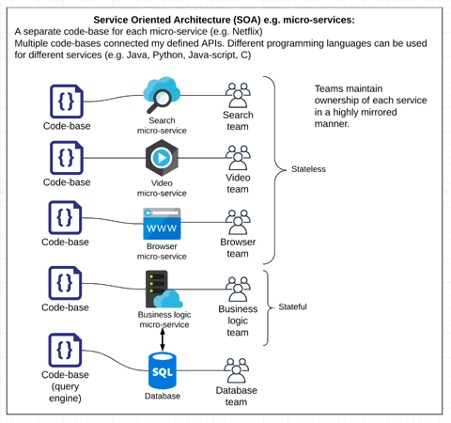Service Oriented Architecture
Before discussing the results of this study, I will briefly outline the different software architectures that play a part in the story of cloud computing and in the everyday architectural decisions that my team and I make when designing and developing Snapfix technical artefacts.
Software development of artefacts, including cloud computing artefacts, often begins with a classic ‘monolithic’ architecture (see Figure 6). A monolithic artefact has a single code-base with multiple modules and a single build system which builds the entire application. This architecture can be maintained as the system expands but has proven to be challenging when developing global scale cloud computing artefacts (Dehghani, 20181). In the cloud era, Service Oriented Architectures (SOA) and related microservices architectures, have dominated the architecture of public cloud services being offered on the market. Microservices can be thought of as a collection of mini-monoliths. The overall system is comprised of many microservices with their separate code-bases and communicating via a well-defined interface. The technical architecture and organizational structure of the firm are considered to be well mirrored if each micro-service is developed and maintained by a single technically autonomous team. A single team is usually made up of 10-20 actors and usually manages several microservices.

With these architectural concepts in mind, we can explore the results.
Next: Results and Discussion
-
Dehghani, Z. (2018). How to break a Monolith into Microservices. Retrieved 20 August 2019, from Martinfowler.com website: https://martinfowler.com/articles/break-monolith-into-microservices.html ↩︎
